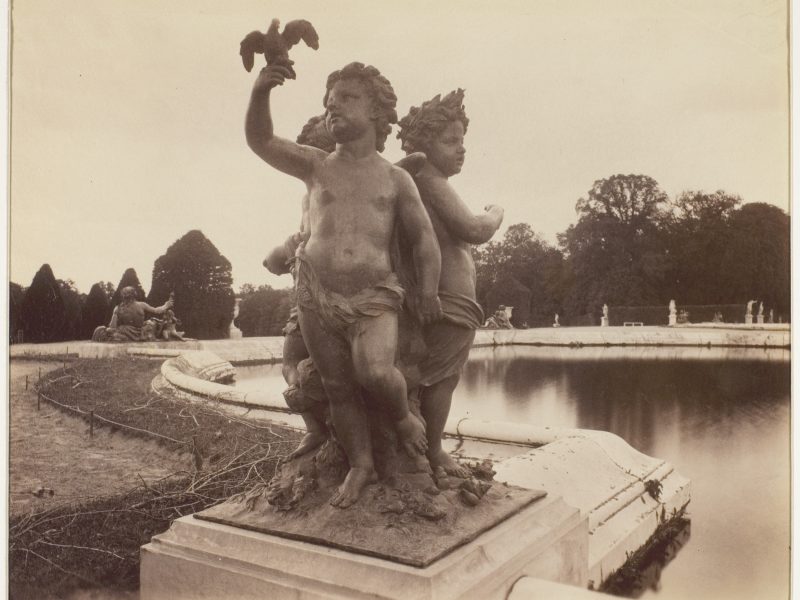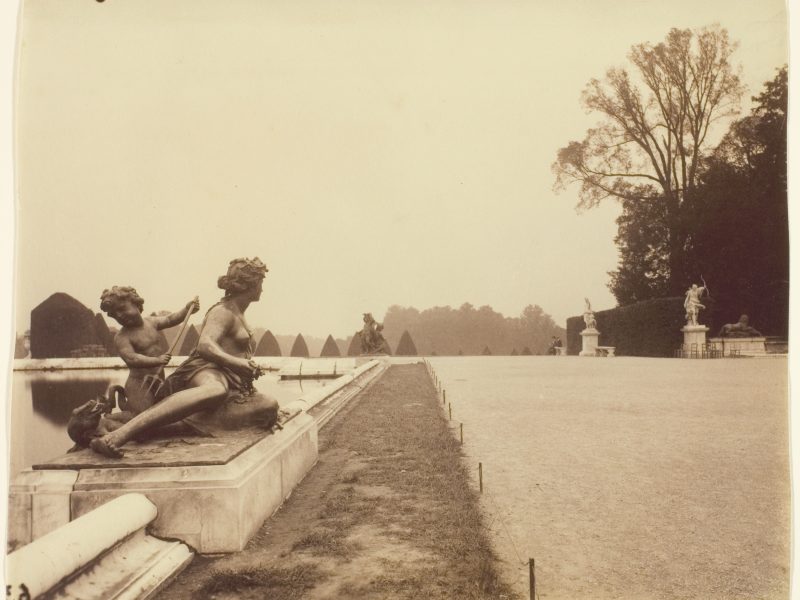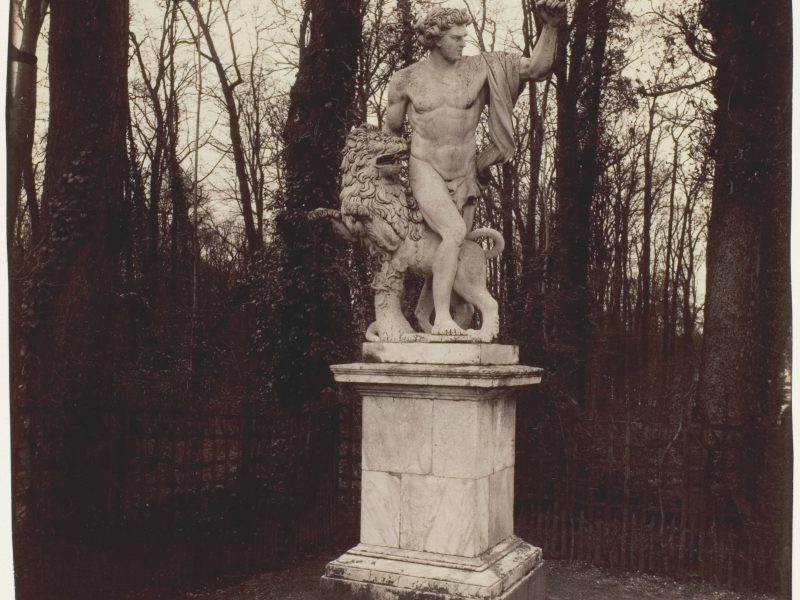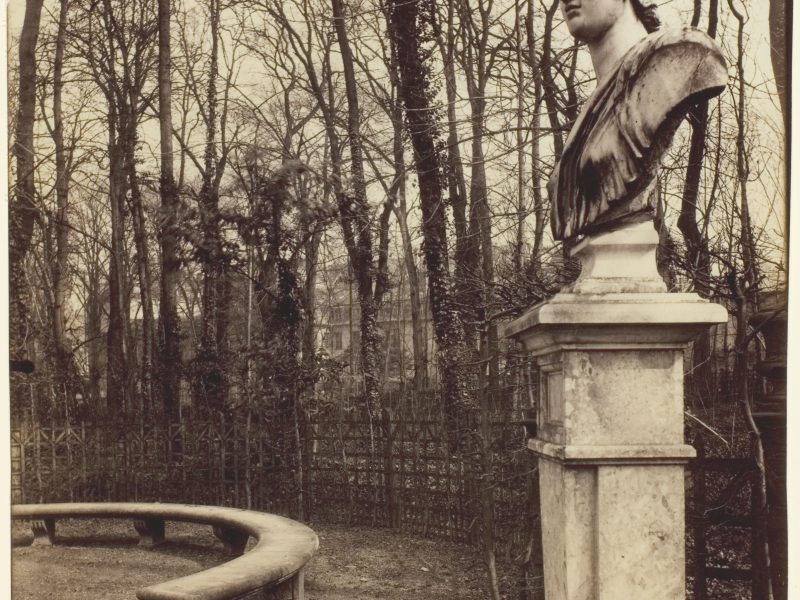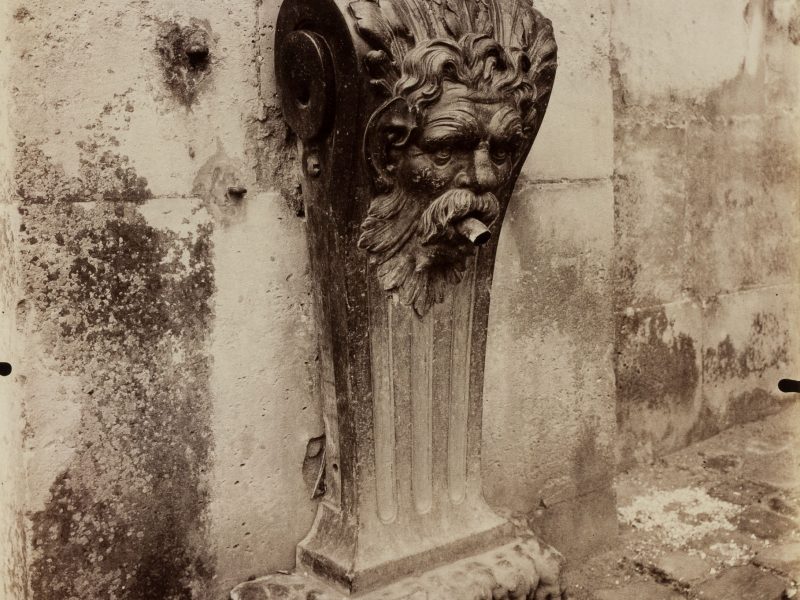Jean-Eugène-Auguste Atget
For almost three decades, beginning in 1898, the former actor Eugène Atget systematically documented the city of Paris, whose old-world traditions, establishments, and tradespeople he saw vanishing with the encroachment of modernization. He compiled an archive of some 8,500 negatives, selling his images as “documents for artists” to stage designers, interior decorators, and painters. Characterized by a quiet precision and an often mysterious emptiness, Atget’s photographs were discovered in the 1920s by the American expatriate artist Man Ray, who lived down the street from the photographer. Atget’s work soon became celebrated as an example of proto-Surrealism at the same time that it was held up as a model for a new kind of documentary photography. Upon Atget’s death, Man Ray’s assistant, the photographer Berenice Abbott, acquired the more than eight thousand prints found in his studio and devoted decades to promoting his vast and remarkable oeuvre.
An avid Francophile and the bibliographer of an important Surrealist collection of books and journals, Hugh Edwards had been aware of Atget long before he exhibited the photographer’s work or acquired it for the collection.[1] He might have encountered it through the efforts of Abbott (who helped produce the 1930 monograph of the artist published in both French and English) or perhaps through the criticism of Walker Evans, who had favorably reviewed Atget’s photographs in a 1931 issue of Harvard’s Hound and Horn; Edwards certainly saw a through line from Atget to Evans and other documentary photographers. Although he had hoped to acquire the entire trove assembled by Abbott, he did not have the funds for such a large purchase. Instead, in 1963 he secured the purchase of 127 Atget photographs of Versailles from the antiquarian bookseller Martin Breslauer, Ltd.[2] In 1970 Edwards was finally able to mount a presentation of Atget’s photographs, but, in a rare departure for a curator who preferred to organize his own shows, it was a traveling exhibition from the Museum of Modern Art, New York. In the accompanying press release, Edwards compared the artist to Flaubert, Proust, and Zola: “More than any other photographer of the past, Atget fulfills what is expected of the great artist. He belongs in that company of rare individuals for which France will always be famous.”[3]
[1] See Edwards, Surrealism and Its Affinities: The Mary Reynolds Collection, a Bibliography (Art Institute of Chicago, 1956).
[2] He lamented in a letter that with his limited funds it was impossible to acquire the complete collection of work by “this great master,” which Abbott demanded be kept whole (that trove would later end up at the Museum of Modern Art in New York). Edwards to André Jammes, Oct. 17, 1963, Institutional Archives, Art Institute of Chicago; see also Edwards to Martin Breslauer, Ltd., Aug. 27, 1963, Institutional Archives, Art Institute of Chicago.
[3] Press release for Photographs by Eugène Atget, 1970, on file in the Photography Department, Art Institute of Chicago.
